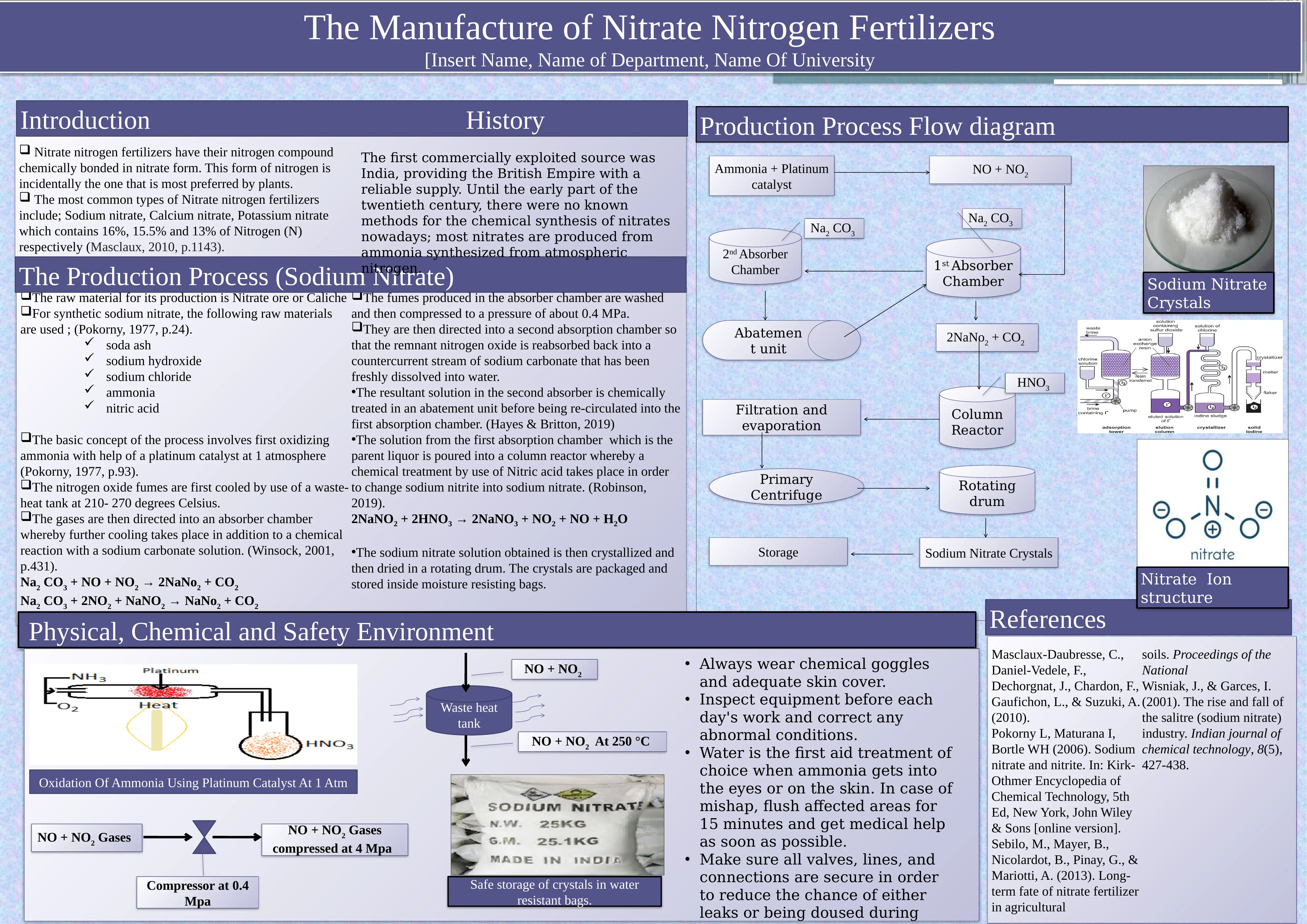Year 1 Semester 2: Nitrate Nitrogen Fertilizer Production Project
VerifiedAdded on 2023/01/16
|1
|795
|63
Project
AI Summary
This project provides a detailed overview of the manufacture of nitrate nitrogen fertilizers, focusing on the production of sodium nitrate. The assignment begins with an introduction to nitrate nitrogen fertilizers, highlighting their importance and common types, including sodium nitrate, calcium nitrate, and potassium nitrate. It then delves into the history of nitrate production, tracing its origins and evolution, noting the shift from natural sources to synthetic methods. The core of the project describes the sodium nitrate production process, outlining the raw materials used (nitrate ore, soda ash, sodium hydroxide, sodium chloride, ammonia, and nitric acid) and the step-by-step procedures. This includes oxidation of ammonia, cooling and absorption processes, and the chemical reactions involved. The project includes a process flow diagram and discusses the physical, chemical, and safety aspects of the process, emphasizing the importance of safe handling and storage. Finally, the project provides references to support the information and illustrates the nitrate ion structure.

![[object Object]](/_next/static/media/star-bottom.7253800d.svg)